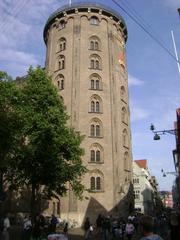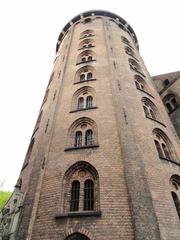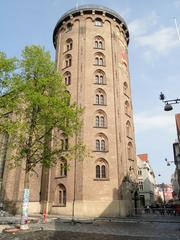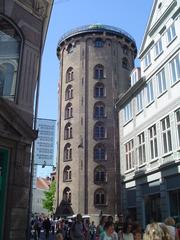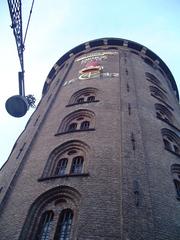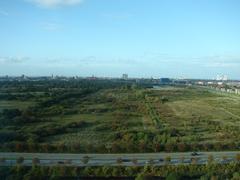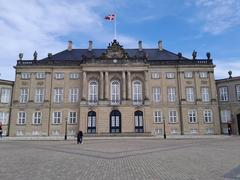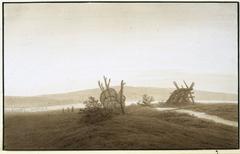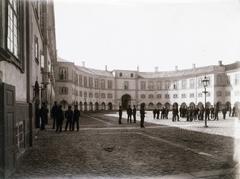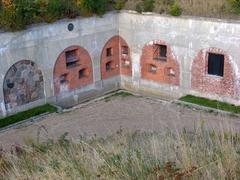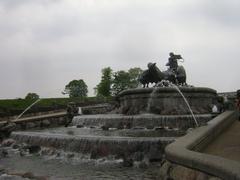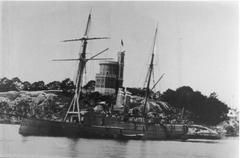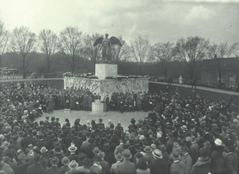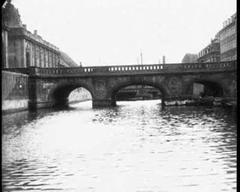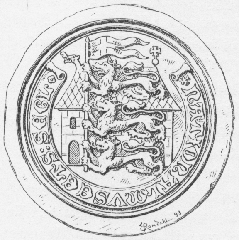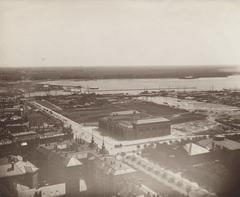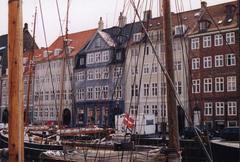
Rundetårn Visiting Hours, Tickets, and Historical Sites in Frederiksberg
Date: 17/07/2024
Introduction
Rundetårn, or the Round Tower, stands as one of Copenhagen’s most iconic landmarks, seamlessly blending historical grandeur, architectural ingenuity, and cultural significance. Constructed between 1637 and 1642 under the auspices of King Christian IV, this 34.8-meter-tall tower was conceived as part of the Trinitatis Complex, which also included a university library and an observatory. The primary purpose was to serve as an astronomical observatory, reflecting the king’s profound interest in science and education (Visit Copenhagen).
Designed by Danish architect Hans van Steenwinckel the Younger, Rundetårn is renowned for its unique helical corridor that spirals around the hollow core, allowing horse-drawn carriages to transport heavy astronomical instruments to the observatory at the summit. This architectural marvel, characterized by a blend of Gothic and Renaissance styles, remains one of Europe’s oldest functioning observatories (Kulturarv).
The tower’s historical significance is further underscored by its survival of the Great Fire of Copenhagen in 1728 and its use as a lookout during the Napoleonic Wars. Today, Rundetårn continues to captivate visitors with its panoramic views of Copenhagen, its rich history, and its role in various cultural events and exhibitions. Whether you’re climbing its famous spiral ramp or exploring the library hall exhibition space, Rundetårn offers an unforgettable window into Denmark’s past and present (Copenhagen Museums).
Table of Contents
- Introduction
- Origins and Construction
- Architectural Design
- Astronomical Significance
- The University Library
- Historical Events
- Modern-Day Rundetårn
- Visiting Hours and Tickets
- Special Events and Guided Tours
- Travel Tips and Nearby Attractions
- Restoration and Preservation
- Cultural Impact
- Visitor Experience
- Educational Programs
- Accessibility
- Frequently Asked Questions
- Conclusion
Origins and Construction
Located in the heart of Copenhagen, Denmark, Rundetårn began its construction in 1637 and was completed in 1642 under the reign of King Christian IV. The tower was part of the Trinitatis Complex, which also included a university library and an observatory. The primary purpose of Rundetårn was to serve as an astronomical observatory, reflecting the king’s interest in science and education (Visit Copenhagen).
Architectural Design
Designed by Danish architect Hans van Steenwinckel the Younger, the tower stands 34.8 meters tall and features a unique helical corridor that spirals 7.5 times around the hollow core to the top. This design allowed a horse and carriage to transport heavy astronomical instruments to the observatory. The architecture is a blend of Gothic and Renaissance styles, typical of the period (Kulturarv).
Astronomical Significance
Rundetårn’s observatory was the first of its kind in Denmark and was crucial in advancing 17th-century astronomy. Equipped with state-of-the-art instruments, including a large quadrant and a telescope, the tower’s height made it ideal for celestial observations, free from city light pollution (Copenhagen Museums).
The University Library
Beneath the observatory, the Trinitatis Church housed the university library, established in 1657. Serving the University of Copenhagen’s students and faculty, it contained a vast collection of books and manuscripts, making it one of Denmark’s most important libraries until it moved in 1861 (University of Copenhagen).
Historical Events
Throughout its history, Rundetårn has witnessed significant events. It survived the Great Fire of Copenhagen in 1728 relatively unscathed and was used as a lookout during the Napoleonic Wars. By the 19th century, it became a popular tourist attraction, drawing visitors worldwide (Denmark History).
Modern-Day Rundetårn
Today, Rundetårn remains a prominent landmark. The observatory is still in use, making it one of Europe’s oldest functioning observatories. The tower hosts various cultural events, exhibitions, and concerts year-round. Visitors can climb the spiral ramp for a panoramic view of Copenhagen (Visit Denmark).
Visiting Hours and Tickets
Rundetårn is open daily, with varying hours depending on the season. Generally, it opens from 10 AM to 8 PM. Tickets can be purchased on-site or online. Prices are around DKK 25 for adults and DKK 5 for children. For up-to-date information on visiting hours and ticket prices, visit the official Rundetårn website.
Special Events and Guided Tours
Rundetårn offers special events like stargazing nights and historical reenactments. Guided tours are available for schools and tourists, providing deeper insights into the tower’s history, architecture, and astronomical significance. Check the Rundetårn events page for more details.
Travel Tips and Nearby Attractions
Rundetårn is easily accessible by public transport. Nearby attractions include Rosenborg Castle, the Botanical Garden, and the National Gallery of Denmark. Plan your visit to explore these sites conveniently located near Rundetårn.
Restoration and Preservation
Over the years, Rundetårn has undergone several restoration projects to preserve its historical and architectural integrity. Significant restoration in the early 20th century involved cleaning and repairing the tower’s exterior. Recent efforts focus on modernizing facilities while maintaining historical charm (Copenhagen City Archives).
Cultural Impact
Rundetårn has had a lasting impact on Danish culture and history. Featured in literature, art, and music, it is often associated with Hans Christian Andersen and appears in various Danish films and shows, cementing its status as a cultural icon (Danish Culture).
Visitor Experience
For a unique experience, climb the spiral ramp to the top, explore the library hall exhibition space, and enjoy a 360-degree view of Copenhagen from the observatory. Photography enthusiasts will find plenty of opportunities for stunning shots (Copenhagen Tourism).
Educational Programs
Rundetårn offers educational programs and guided tours for schools and tourists, providing insights into the tower’s history, architecture, and astronomical significance. Special events like stargazing nights and historical reenactments enhance the visitor experience (Rundetårn Official).
Accessibility
While the spiral ramp isn’t suitable for wheelchairs, a virtual tour is available on the official website. Information panels and audio guides in multiple languages cater to international visitors (Accessibility Denmark).
Frequently Asked Questions
What are Rundetårn’s visiting hours?
- Generally, Rundetårn is open from 10 AM to 8 PM, but hours may vary by season. Check the official website for current timings.
How much are tickets to Rundetårn?
- Adult tickets are approximately DKK 25, and children’s tickets are DKK 5. Tickets can be purchased on-site or online.
Is Rundetårn accessible for disabled visitors?
- The spiral ramp isn’t suitable for wheelchairs, but a virtual tour is available online.
Conclusion
Rundetårn is not just a historical monument but a living piece of Danish heritage. Its rich history, architectural beauty, and cultural significance make it a must-visit destination in Copenhagen. Plan your visit, explore its wonders, and immerse yourself in the vibrant history and culture it offers. For more updates, follow us on social media and check out other related posts.
References
- Visit Copenhagen - Rundetårn
- Kulturarv - Rundetårn
- Copenhagen Museums - Rundetårn
- Visit Denmark - Rundetårn
- Copenhagen City Archives
- University of Copenhagen
- Denmark History
- Danish Culture
- Copenhagen Tourism
- Accessibility Denmark
- Rundetårn Official
- Rundetårn events page
- Rosenborg Castle
- Botanical Garden
- National Gallery of Denmark
